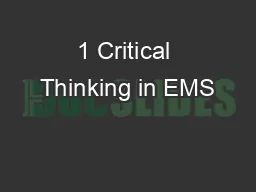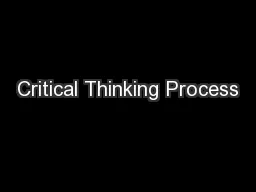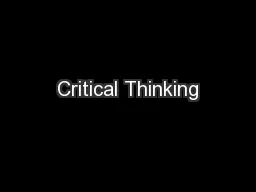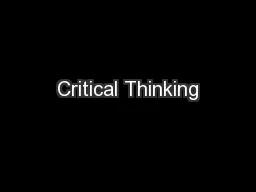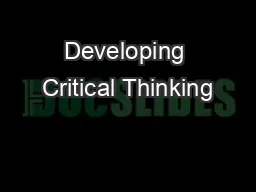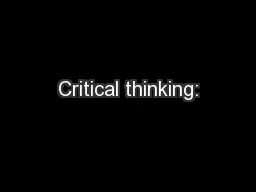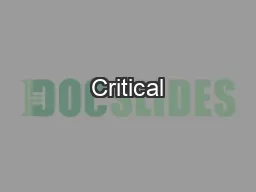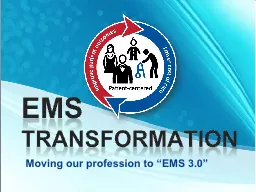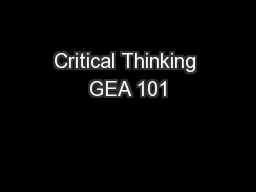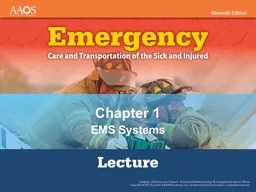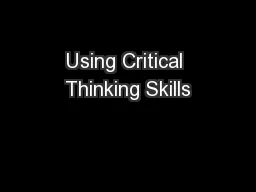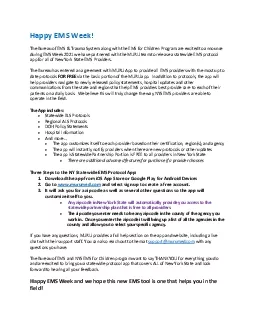PPT-1 Critical Thinking in EMS
Author : cheryl-pisano | Published Date : 2018-11-29
June 2010 CE Condell Medical Center EMS System Site Code 107200E1210 Prepared by Lt William Hoover Wauconda FD Reviewed by Sharon Hopkins RN BSN EMTP 2 Objectives
Presentation Embed Code
Download Presentation
Download Presentation The PPT/PDF document "1 Critical Thinking in EMS" is the property of its rightful owner. Permission is granted to download and print the materials on this website for personal, non-commercial use only, and to display it on your personal computer provided you do not modify the materials and that you retain all copyright notices contained in the materials. By downloading content from our website, you accept the terms of this agreement.
1 Critical Thinking in EMS: Transcript
Download Rules Of Document
"1 Critical Thinking in EMS"The content belongs to its owner. You may download and print it for personal use, without modification, and keep all copyright notices. By downloading, you agree to these terms.
Related Documents

